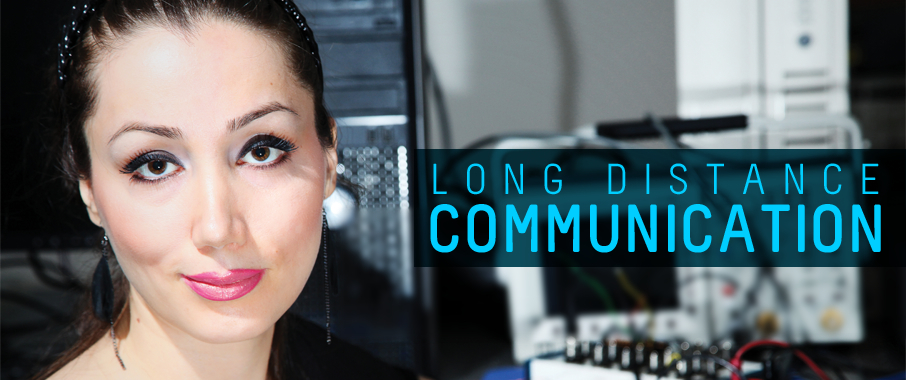


The worst part of any day is often the commute to and from work. You’re stuck in traffic, at the mercy of accidents, weather, and all the other drivers who clearly have no obligation to follow the rules of the road. But for Maryam Niknamfar, an international student from Iran, her commute for three years was even more intense. She flew 500 miles to work each week just so she could teach at one of the Iranian universities in Shushtar.
Being a teacher is one of only a handful of career choices available to women in Iran in which they can earn a decent salary and be a highly respected member of the community. Although she loved teaching, and might do it again one day, Niknamfar wanted more—she wanted to pursue engineering.
Before coming to UTSA, Niknamfar earned her master’s degree from the Science and Research University, in Tehran, Iran, and set her sights on advancing her career with a degree from an American university.
“I was travelling long distances to improve my resume in order to apply for universities in the U.S. I spent hours searching for a good advisor in electrical engineering with a specific area of interest in telecommunication. After taking the TOEFL and GRE exams, I applied to UTSA and have been here since the fall of 2010,” Niknamfar said.
For Niknamfar, it was important to advance her career and continue studying engineering. As with most engineers, she has been fascinated by mathematics and physics from an early age. Her mother, who is also her best friend, encouraged her to pursue these interests and guided her through all levels of education. As she progressed in her studies, Niknamfar combined her interests with telecommunication and, through her research in fiber optics, has been working on methods to improve the way we communicate. Her current coursework involves improving radio over fiber optics (ROF) for better signal quality.
“ROF is a combination of telecommunication techniques, which are mainly mathematics-based, and optical fiber techniques, which are mainly physics-based,” Niknamfar explained. “ROF is relatively new method which can support an increasing demand for wireless data transmission devices. My research is focused on enhancing ROF techniques and making them more efficient. Optical fiber could handle a huge data rate for transmission over long distances if it’s nonlinearity and distortion could be controlled. I am looking for novel methods which could control these impairments.”
Improving communication techniques strikes close to home for Niknamfar because she is on a single-entry visa. Because she can’t visit Iran or leave the U.S. before she completes her research Niknamfar must rely on current technologies to connect with friends and family back home.
“It is hard for me to be so far from my parents, I am always worried about their feelings and health. My mother is my close friend, and before I came here I could talk to her every day. Now I don’t have the same chance. We could use Skype to talk, but this is too hard for us since we aren’t able to hug each other and really connect. This is the situation I have to tolerate in order to pursue my education in a high-quality university and live in a society which is supportive to women,” Niknamfar said.
Niknamfar isn’t making these sacrifices just for herself. She also wants to change the culture she grew up in and inspire other women to pursue their dreams. Although Iran encourages women to seek higher education— according to Niknamfar, more than 50 percent of university students in Iran are female—the opportunities for women after graduation aren’t as lucrative as they are for men. Women must still wear traditional hijabs at work, it is more difficult for them to find a good job, and marriage laws heavily favor the men.
“I am determined to continue my education at UTSA for a better future for myself and the people I could support; women like me who want a prosperous future, but have to look for it in a more modern country,” Niknamfar said. “Most of the women in Iran are well educated, and have made notable contributions to Iran’s scientific environment. But, their chances of finding a good job are less than that of men.”
Although she doesn’t have to travel 500 miles to work each week, Niknamfar must overcome other hurdles many of us never face. She must learn a language different from her own, adjust to new cultural and social norms, and maintain her 4.0 G.P.A. Compared to those challenges, a 30-minute commute to work doesn’t seem so bad anymore.